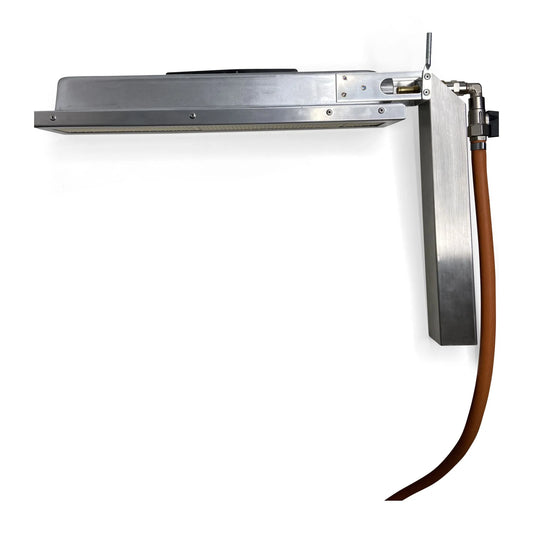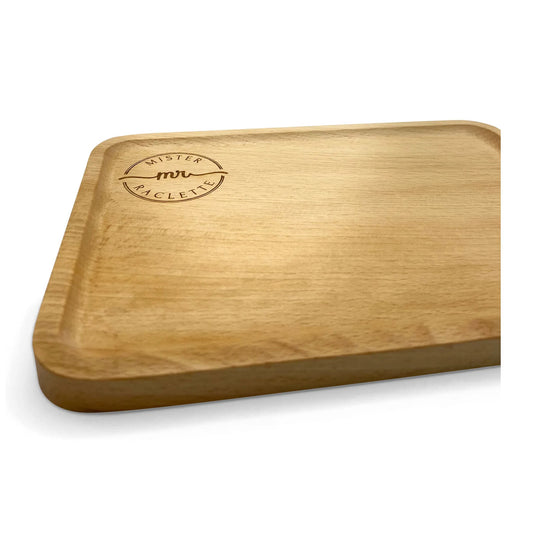How is quality control carried out?
Supervision during the production of raclette cheese
Critical points in the manufacture of squeegee of Valais A.O.P. should be checked at regular intervals.
Monitoring of raclette cheese manufacturing processes
The cheese maker is required to carry out daily analyzes attesting to the quality of the blended milk and the correct acidification of the cheeses in the press. The acidity of the raw mixed cultures (CM 401 and CM 420) is checked with each new preparation. Bacteriological analyzes must be carried out regularly at the most critical moment of the manufacturing process (sampling of the grain before exit). It is necessary to know the dangers during the various stages of manufacture, the critical points during manufacture are to be noted in the log of manufacture. For semi-hard cheeses are the following:
Daily check
▪ the cooling temperature of the milk ;
▪ boiler milk reductase (except in alpine pastures where visual inspection is possible;
▪ pH during acidification;
▪ the thermization temperature
Weekly check
▪ the temperature in the cellar and the fridges;
▪ the concentration of the salt bath;
▪ mastitis milk in the mixing milk;
▪ the concentration of cleaning products.
Check every two months
▪ Listeria Monocytogenes from smear cheese in the cellar
Check every four months
▪ Staphylococci Aureus from boiler grain;
▪ Escherischia Parcels from boiler grain when the milk is thermized or when the raw milk tomme cheese is ripened for less than 60 days.
Monitoring on receipt of milk from raclette cheese producers
The daily control of the milk of mixture without culture is a very good indicator of the quality of the milk of the producers (IT 4.4) and of the effectiveness of the cleanings with the cheese dairy (Chap. 6).
It is necessary to carry out regularly (in principle every week) an individual analysis of the milk of the producers. The procedure for the different analyzes is explained in the Valais A.O.P. raclette cheese making course.
On a pasture that does not have an incubator and which does not receive milk from a neighboring pasture, a visual analysis of milking hygiene is necessary (milking hygiene, cleanliness of milking facilities and transport utensils) . Note the cleanliness issues in FO 4.2. under "milking hygiene". If milk is brought in from a neighboring mountain pasture, the processing farm must be equipped with an incubator to carry out the reductase analyzes of the milk delivered.
On the mountain pasture, dairy health checks are carried out using the Schalm test, which will be carried out no later than one week after the inalpe, then at least once a month. Milk from quarters reacting positively (++, +++) to the Schalm test cannot be processed. The results of the monthly Schalm test checks must be recorded in FO 5.2. The analysis of the Schalm test can be replaced by the enumeration, for each cow, of the milk cells carried out by the breeding federations. It is forbidden to process milk from animals with open and purulent wounds in and around the udder. Daily production of less than two liters must not be processed. An analysis of the mixed milk using the soda test or the Schalm test will in principle be carried out every week (IT 5.1.).
In order to prevent mastitis, the order must be respected during milking: first the cows healthy, then cows with a diseased udder, lastly cows under treatment. For cleaning the udders, use single-use towels or wood wool. At the mountain pasture, disinfection of the teats is strongly recommended immediately after removing the milking cluster. Treatments administered to livestock should be recorded in FO 5.3
Water quality control
Food establishments must have a sufficient quantity of drinking water. The village cheese dairies use water from the public network.
Establishment with its own source of drinking water The quality of water used in alpine cheese dairies must correspond to that of drinking water. A microbiological analysis of the water in the pasture is carried out each year in the spring (Order of January 8, 1969).
If the drinking water undergoes a purification treatment (filtration, chlorination, UV lamp) a self-check of the installation must be carried out.
Control of the maintenance of installations and instruments
5.1 Facility maintenance
Installations requiring periodic maintenance must be known. A list of the installations to be maintained should be drawn up, noting the type of installation, the maintenance frequencies and the inspection dates.
The installer must provide an adequate maintenance plan. When the supplier cannot provide a plan, the quality assurance manager will carry it out (for example: periodic change of flexible pipes or seals). The maintenance plans and the dates of the checks will be recorded in the QA workbook under FO 8.1.
5.2 Instrument controls
Every week, the pH meter must be checked with buffer solutions and, if necessary, calibrated. The values are entered under FO 8.2. At least once a year, the accuracy of the thermometers used in the cheese dairy must be checked. The values are entered under FO 8.2.









